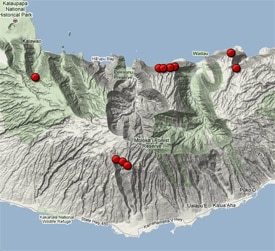World 🢖 Australia and Oceania 🢖 Polynesia 🢖 United States 🢖 Hawaii 🢖 Moloka’i
Waterfalls 🢔 Geological wonders 🢔 Categories of wonders
Wonder
Pu’uka’oku Falls (Puukaoku Falls)
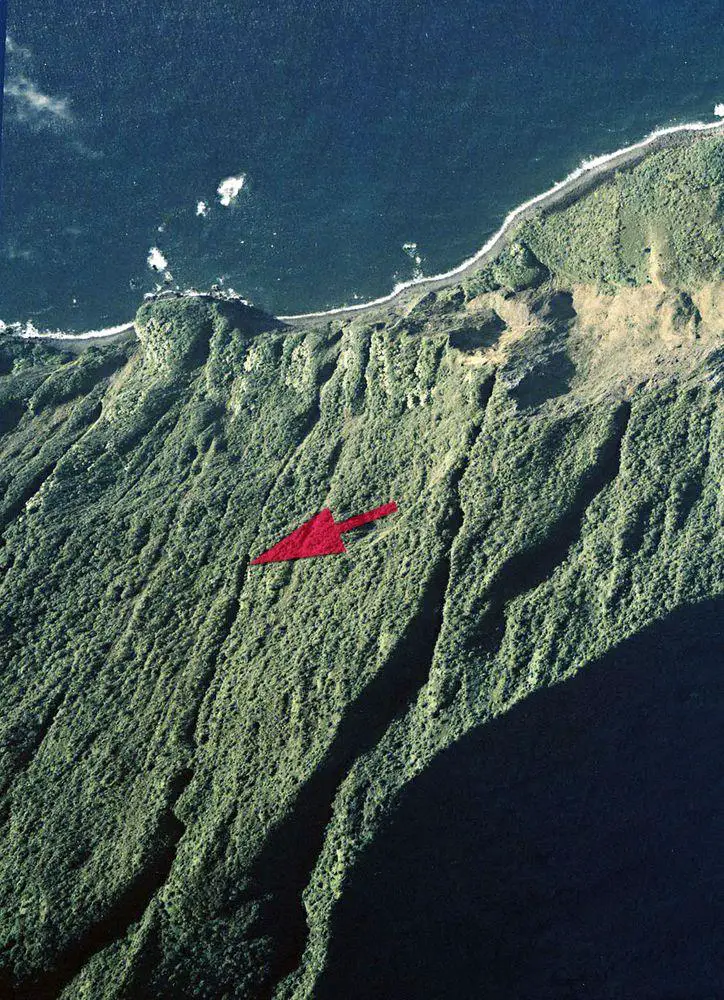
 In short
In short
Some of the highest seaside cliffs in the world are stretching along the northern coast of Moloka’i island. The highest ones are some 4.2 km wide cliffs between Pelekunu and Wailau valleys, reaching a height up to 1,010 m.
Here are located several spectacular and extremely high waterfalls, including the Puukaoku Falls.
 41.3%
41.3%
GPS coordinates
Location, address
Alternate names
Height
Map of the site
If you see this after your page is loaded completely, leafletJS files are missing.
 In detail
In detail
Description
Falls have formed in some of the highest cliffs of the world (Haloku Cliffs), which are located in the north-eastern part of Moloka’i, in some 4 – 5 km long section between the Pelekunu and Wailau valleys. Here the ocean meets nearly vertical cliffs rising up to 1,010 m above the sea. Cliffs end abruptly in the sea and in Hawaiian are called “Na Pali” – sea cliffs.
There are numerous small streams falling over the edge of the cliff. These streams are small (only 1 – 3 km long) and seasonal – during the dry season there is little water. But during the rainy season (November – March) enormous cliff becomes adorned with numerous white ribbons of waterfalls.
Pu’uka’oku Falls, according to the estimates from topographical maps are approximately 840 meters tall. The water here is not falling in a free fall – for the most part, it slides down along the nearly vertical basalt cliff.
Waterfall is thin and deeply etched in an inaccessible cliff. Due to this it is rarely seen and photographed.
Falls can be observed from the sea – there are tourist companies offering guided boat tours along this rugged, extremely impressive coast. One can go closer to the falls and experience a mist falling from this wonderful nature monument. Even more impressive sight opens from a helicopter. Boat ride and helicopter though require good weather conditions.
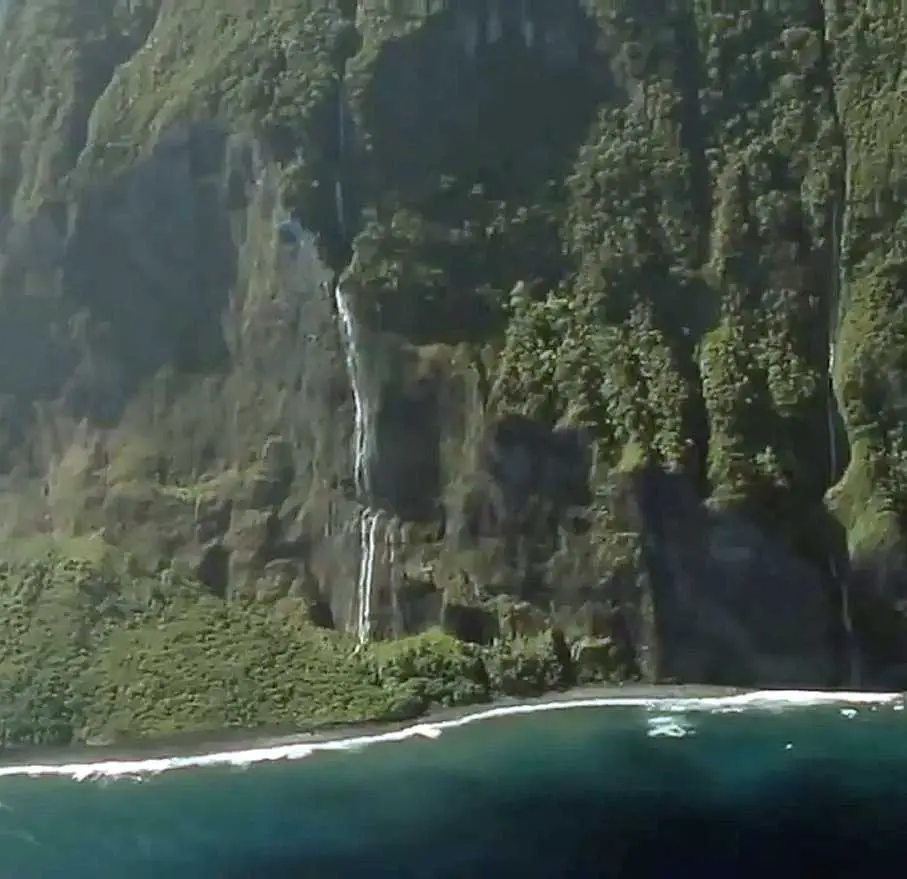
Only 500 m to the west there is located the highest known waterfall in Hawaii and one of highest waterfalls in the world – Olo’upena Falls (approximately 900 m tall) and some 200 – 400 m to the west are some 580 m high Wailele Falls. 800 m to the west is another very tall waterfall – Haloku Falls (approximately 700 m).
In some lists Pu’uka’oku Falls are listed as the 8th highest falls in the world. As most of the waterfalls in the world have not been exactly measured, such lists are very approximate.
At high winds Pu’uka’oku Falls and other falls nearby don’t reach the ocean – wind catches them and rises up again. This fascinating sight is not seen by general tourists – helicopters and boats do not move around in such weather.
References
- Pu’uka’oku Falls. World Waterfall Database.
- Pu’uka’oku Falls, image. Diddit.com. Accessed on June 6, 2010
Pu’uka’oku Falls are included in the following list:
 Linked articles
Linked articles
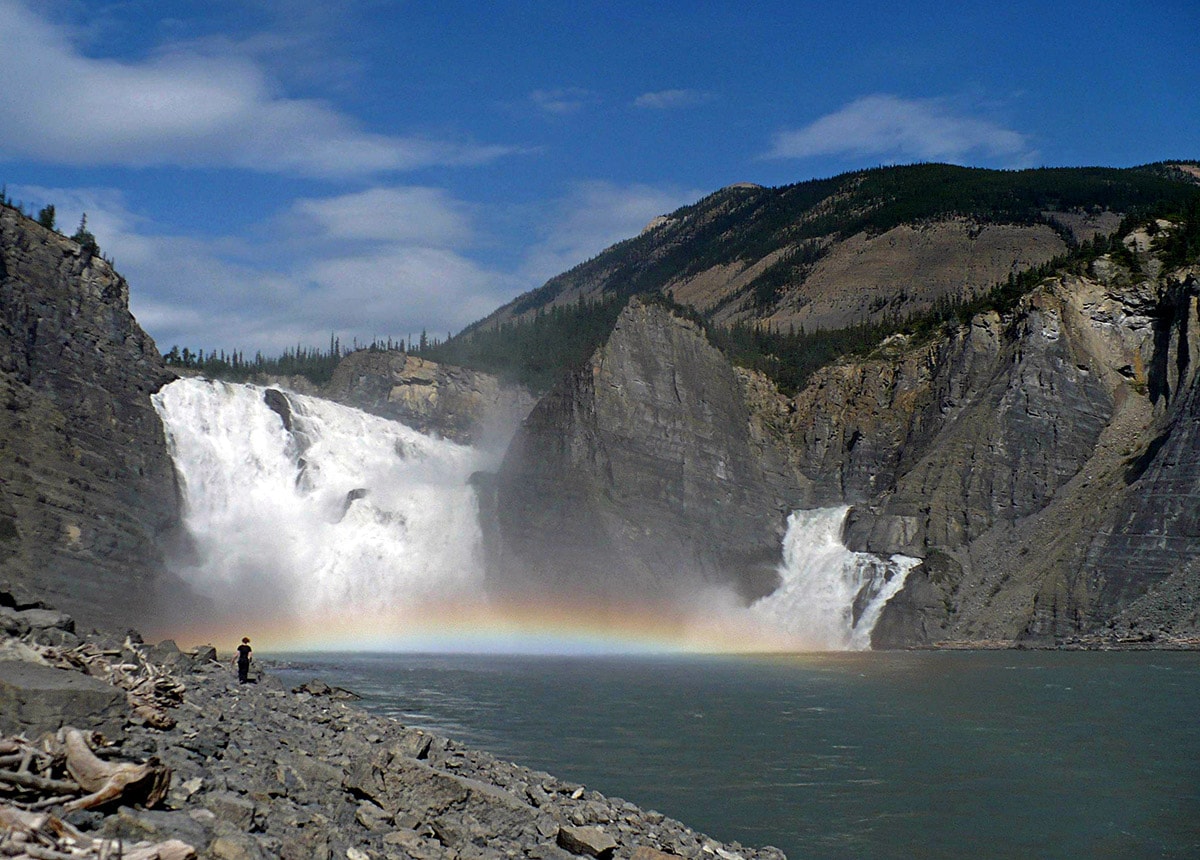
Waterfalls
Some of the most fascinating and awe-inspiring natural monuments are waterfalls or locations where a river abruptly changes its elevation.
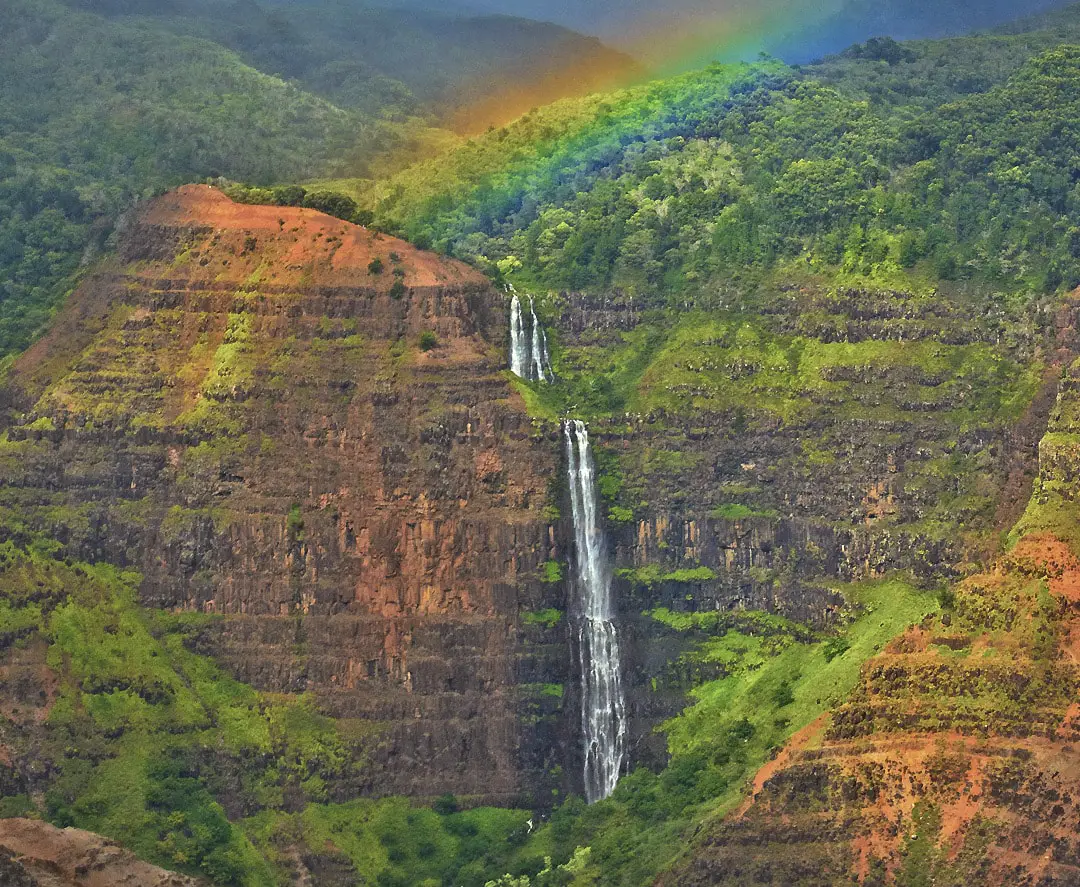
Wonders of Hawaii
The Hawaiian Islands belong to the most remote islands in the world. Hawaii is characterized by a tropical climate, mountainous relief, volcanism, and isolation. If compared to most islands in the Pacific, several Hawaiian Islands have comparatively large landmasses. All these factors have led to the development of numerous impressive and unique natural attractions and some impressive monuments of culture.
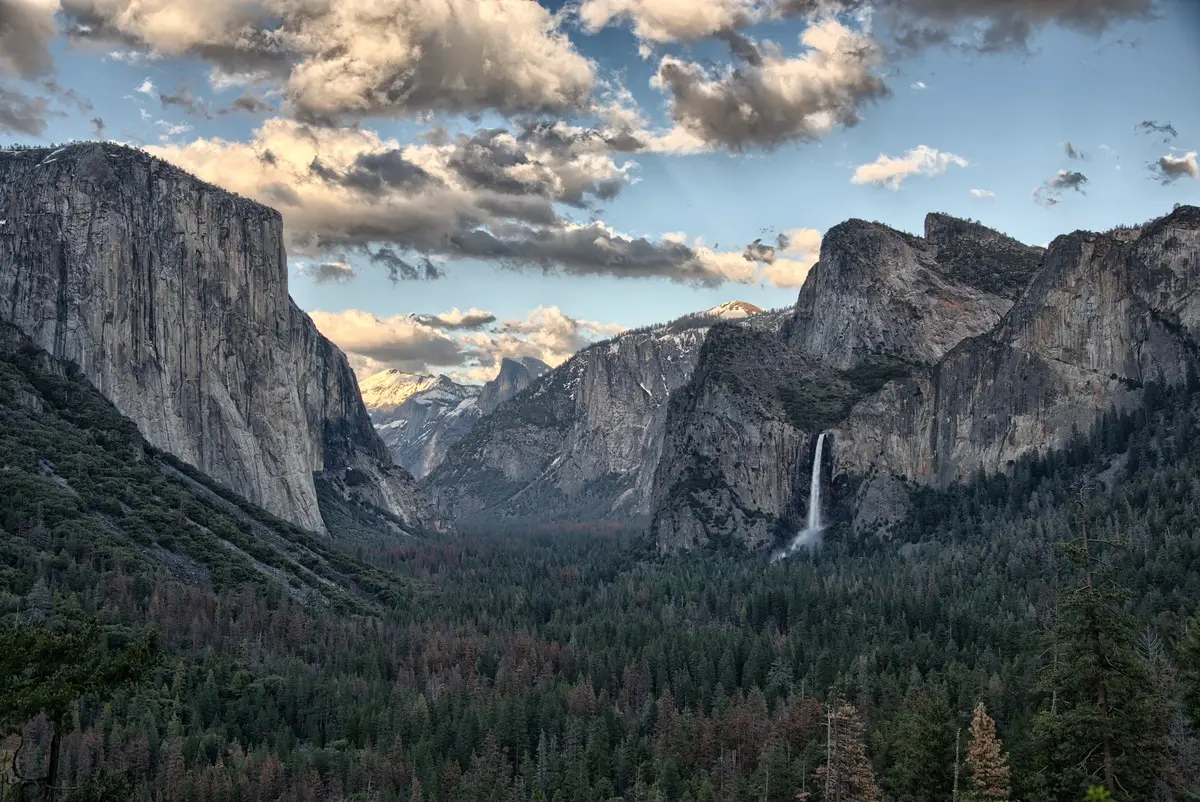
Wonders of the United States
The United States of America is one of the largest countries in the world and offers a wide array of diverse attractions: many are unsurpassed in the world. Highlights of the United States are cliffs, canyons, and rock formations, several impressive downtowns of cities with numerous skyscrapers as well as a rich array of geothermal features, and the giant forest of California.
 Recommended books
Recommended books
Ancient Sites of Maui, Molokai and Lanai
This informative and easy-to-follow guidebook makes the ancient sites of Maui, Molokai, and Lanai available to the general public for the first time. Grouping the sites by location, the book characterizes the cultural background of five main types of sites: heiau (temples), pohaku (sacred stones), petroglyphs, caves, and fishponds.

